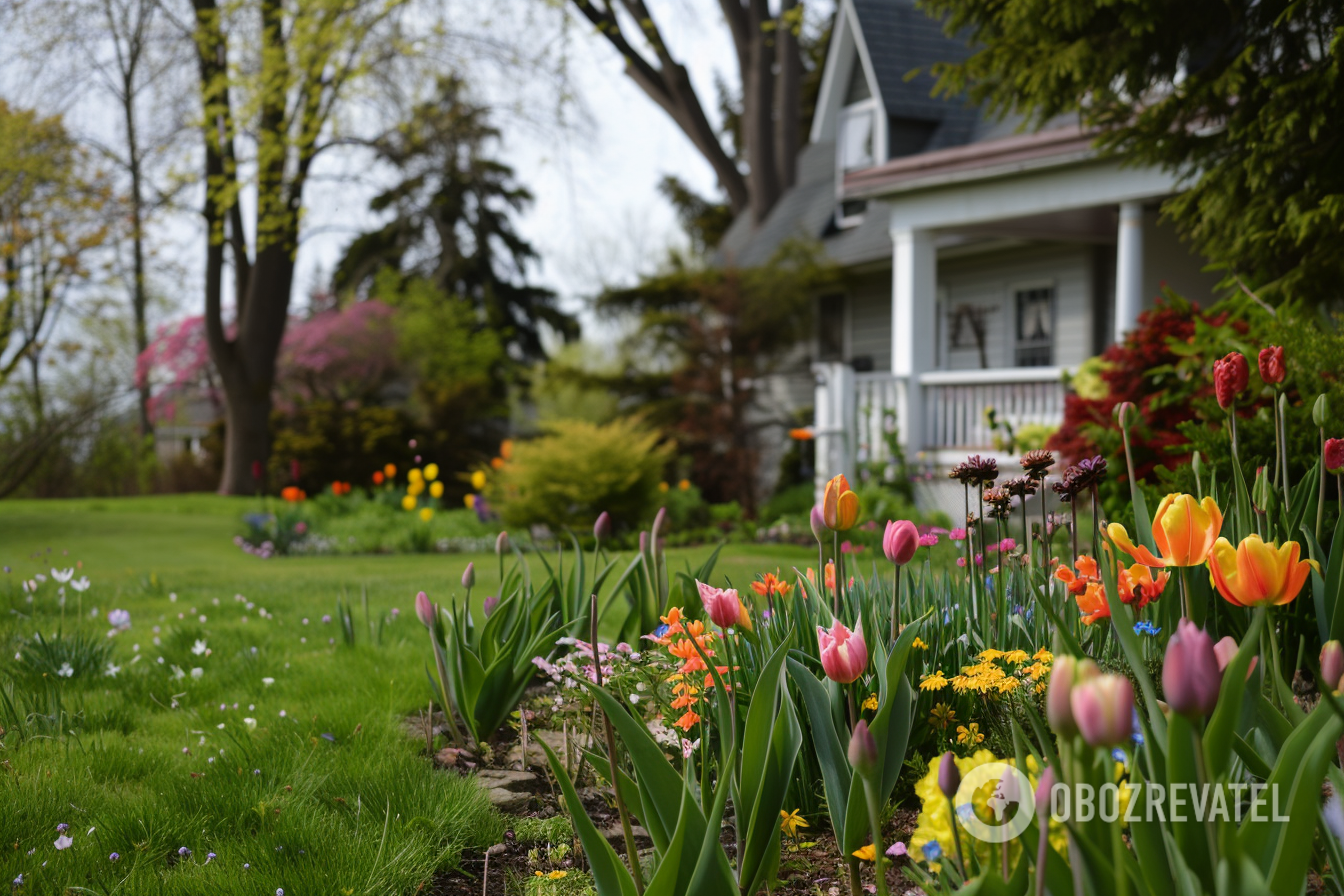News
What flowers should be planted in the fall: instructions for beginners
If you want a beautiful flower bed in the spring, start working in the garden in the fall. All experienced plant lovers know this golden rule.
Autumn planting has many advantages, including allowing flowers to start sprouting as soon as it gets warmer outside - no need to wait for the adaptation period to pass. OBOZ.UA found out which species should be planted in the fall months and how to care for them.
What is the use of autumn planting
In addition to saving time, which we have already mentioned, autumn planting of flowers has a number of other advantages. First of all, it allows you to strengthen the seedlings. During the winter, they undergo natural stratification and come to the warmth well prepared for night frosts. Such flowers not only germinate but also bloom earlier. In addition, they are less susceptible to diseases and pests.
Another plus is that you don't have to water the flowers planted in the fall thoroughly. They will absorb all the moisture from the melted snow and the first spring rains. This natural moisture will help them develop quickly and intensively. Whereas flowers sown in spring need additional moisture and are also at risk of watering errors, which can lead to plant death.
Types of flowers to plant in the fall
Of course, not all flowering plants tolerate wintering well after planting in the fall. But there are actually a lot of such species. First of all, this applies to bulbous flowers such as tulips, lilies, daffodils, crocuses, hyacinths, muscari, scilla, and chionodox.
It is also important to divide and transplant bushy flowering plants in the fall. Such as peonies, hostas, or astilbe.
Autumn planting will benefit clematis, adonis, aconite, large-leaved brunera, phlox, rudbeckia, stonecrop, lupine, bluebells, bush raccoon, autumn helenium, echinacea, etc. In the fall, it is also good to sow asters and annual chrysanthemums, matthiola, calendula, marigolds, blue cornflower, godetia, delphinium, Iberis, lavater, reseda, malkolmia, scabiosa, escholzia. As you can see, before the onset of winter, you can form a lush and very diverse flowerbed that will delight you with flowers as soon as it gets warm and will continue to bloom throughout the warm season.
How to plant onion flowers in the fall
The most popular spring flowers, such as tulips, daffodils, lilies, crocuses, and hyacinths, can be planted throughout the fall. However, you have to do it right.
For example, hyacinths and tulips can be planted until mid-October. Hyacinth bulbs are dug to a depth of 17-18 cm, and especially large ones even to a depth of 20 cm. For tulips, this depth is 15-18 cm, depending on the size of the bulbs.
However, tulips can also be planted in November. However, keep in mind that this is only possible in warm weather. If the temperature drops below 5 degrees, the plants will die. To take no chances, you can plant tulips at home in a container in November and keep them forcing.
How to plant perennial flowers in the fall
In the first half of October, while the weather is warm, you can plant and transplant the same flowers as in September. The rest of the month is a good time to plant lilies of the valley or take care of peony bushes. In November, it is usually too late to take care of perennial flowering plants. During this period, mulching is carried out and plants are covered for the winter.
Autumn sowing of flower seeds
Some perennial flower seeds require stratification to germinate. In fact, this is their hardening by cold. Gentian, aquilegia, lavender, primrose, delphinium, hellebores, and winter-hardy cyclamen varieties in particular need this procedure. Annual plants that can be sown before winter include alissum, calendula, cosmea, lavater, gypsophila, godetia, Iberis, cornflower, escholzia, and nigella.
To stratify these species, it is best to sow them in late October or early November, when the weather is cold but not yet frosty. However, seeds that need to be stratified can be sown even when the first snow falls. However, the soil must be prepared and not frozen. In this case, the seeds are sown quite densely, because not all of them will survive the winter. If there are too many seedlings in the spring, they can always be thinned out.
Subscribe to the OBOZ.UA channels in Telegram and Viber to keep up with the latest events.




























